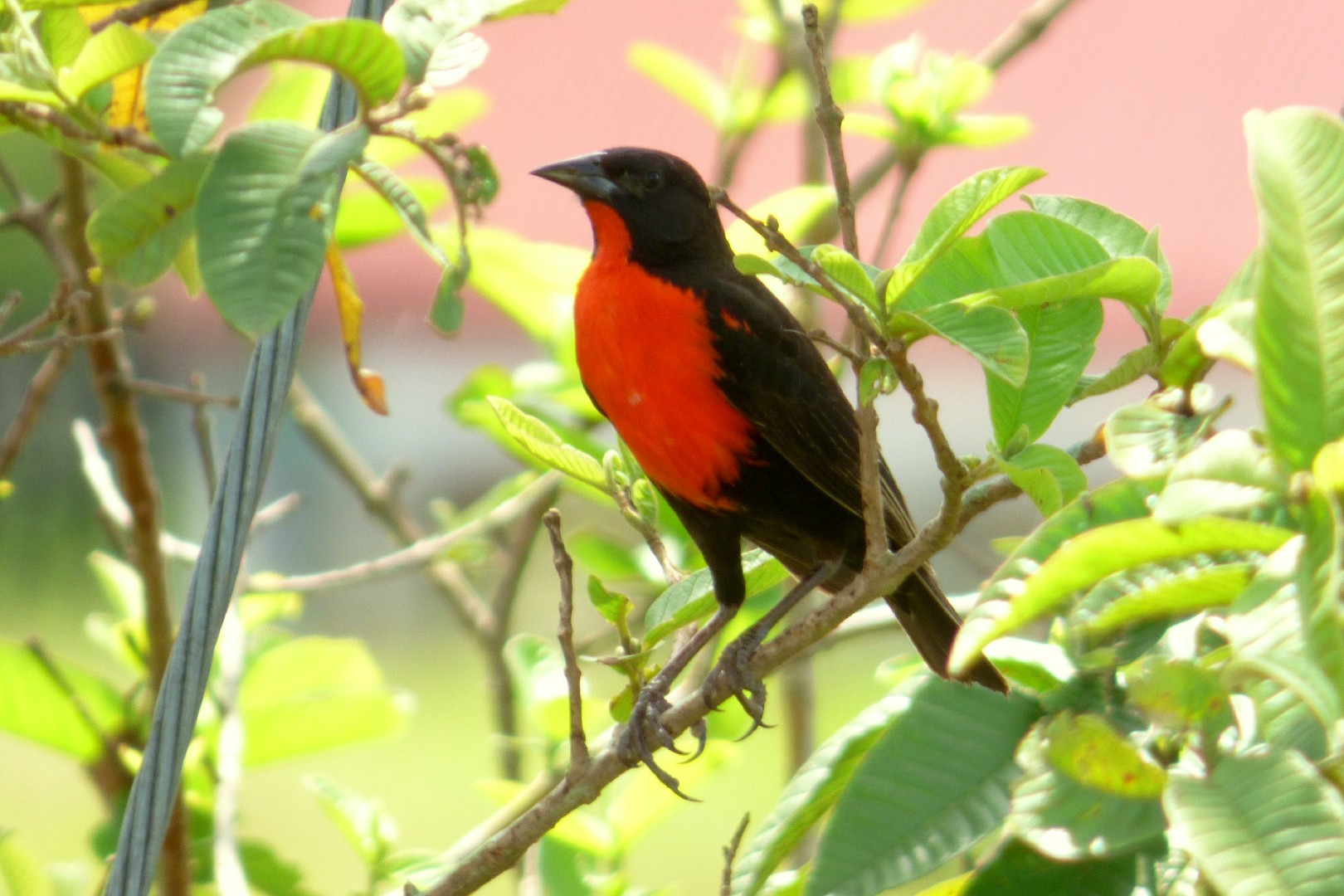Red-breasted Blackbird
A species of North American Meadowlarks Scientific name : Leistes militaris Genus : North American Meadowlarks
Red-breasted Blackbird, A species of North American Meadowlarks
Botanical name: Leistes militaris
Genus: North American Meadowlarks
Content
Description General Info
 Photo By Alejandro Bayer Tamayo , used under CC-BY-SA-2.0 /Cropped and compressed from original
Photo By Alejandro Bayer Tamayo , used under CC-BY-SA-2.0 /Cropped and compressed from original Description
The red-breasted meadowlark (Leistes militaris) is a passerine bird in the New World family Icteridae. It was formerly named red-breasted blackbird but is not closely related to the red-winged blackbird group. The red-breasted meadowlark is resident from south-western Costa Rica, which it has recently colonised, and Trinidad, south to north-eastern Peru and central Brazil. In 2008, it was sighted for the first time in Nicaragua. Like other meadowlarks, it is a bird associated with open country, including moist grasslands, pasture and cultivation, preferably with the odd bush or fence post for males to use as a songpost. In display the male flies up to 10 m (33 ft) in the air, then parachutes down on folded wings whilst singing a wheezing song, ti-ti-pee-pee-KWAAAAAA. The call is a short tsip. The red-breasted meadowlark builds a deep grass-lined open cup nest on the ground amongst tall grasses, with several nests often close together. The normal clutch is two to four reddish brown-blotched cream eggs. The red-breasted meadowlark is a small icterid, 19 cm (7.5 in) long and weighing 40–48 g (1.4–1.7 oz). Males are larger than females. The male has mainly black plumage, apart from a bright red throat, belly and wing epaulets. This striking "redcoat" plumage gives rise to the specific name militaris and the Trinidadian name "soldier bird". The female has buff edged dark brown upperpart feathers, buff underparts with a reddish tinge, and pale streaks through the crown and eye. Juveniles resemble the female, but are paler and lack the reddish tint to the underparts. This species is very closely related to the white-browed meadowlark, S. superciliaris which breeds further south, and was formerly considered to be subspecies of red-breasted meadowlark. The male white-browed is easily distinguished by his bright white supercilium, but females of the two species are almost identical. Female red-breasted meadowlarks are longer billed, smaller, and shorter winged than their relative, with more red and less streaking on the underparts. This gregarious bird feeds mainly on insects and some seeds, including rice, and forages on the ground like a bobolink. The red-breasted meadowlark has benefited from the more open habitat created by forest clearance and ranching, and is extending its range. It is uncertain whether sightings on Tobago represent a small breeding population or wanderers from Trinidad or South America. 
Size
19 cm
Nest Placement
Ground
Feeding Habits
Red-breasted Blackbird primarily consumes insects and seeds. It adopts opportunistic foraging behaviors, often hunting for prey or scavenging for food resources. Unique adaptations include a specialized beak for picking seeds, complemented by agile maneuvers to catch insects in flight.
Habitat
Moist grasslands, pasture, cultivation
Dite type
Granivorous